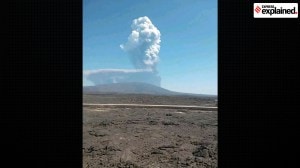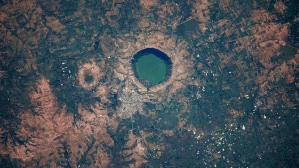Markets react to bottomlines, not headlines
Sensex, which rose on Wednesday after Tuesday’s Mumbai blasts, shows no clear trend in relation to terror strikes. But one important question emerges: do markets reflect the fact that human life is ‘cheap’ in India?

Terrorism and markets make for the strangest of partners, simultaneously in and out of sync with one another. The stock market has its own paradigm (making profits over time), its own logic (buying low, selling high), its own reasons (economic, sectoral, firm level growth). So does the terror industry—paradigm (create fear over time), logic (fear creates uncertainty in the minds and monies of governments), reason (if I have might and money, who can stop me from reaching my goals?). But try and spot a trend between them or seek a mutual interdependence and your trend lines will mirror INSAT-4C’s flight path.
Best to get away from the noise and concentrate on getting facts and data. And then try and convert them into information. Take Sensex movements on five important terrorist attacks in India and one that no government or market can ignore. In India, it’s the March 12, 1993 Mumbai Blasts; the December 13, 2001 Parliament Attack; the October 29, 2005 Diwali Attacks in Delhi; the March 7, 2006 Varanasi Attacks; and yesterday’s Terrible Tuesday. And the global can’t-ignore September 11, 2001.
As I try and crunch numbers, trying to find out when the markets would have been able to assimilate the terror attack information (if the attacks were in the afternoon, the Sensex closing of the same day; if evening, the next day’s closing), I come up against the frustrating researcher’s wall: there is no trend. Of the six attacks analysed, half saw the Sensex go up while half pulled it down. While the biggest absolute fall came in the Varanasi attack, which saw the Sensex fall 217 points (2 per cent), the biggest percentage plunge followed September 11, when it crashed 3.7 per cent (118 points). On the other side, the biggest absolute as well as percentage gain came yesterday, when the market rose 316 points or 3 per cent, leaving Delhi’s Diwali Blasts a 100 points behind.
Markets seem to be reacting cold-bloodedly and are signalling they aren’t ruled by headlines but by bottomlines. Yesterday’s gains rode the above expectation results of Infosys (profits up 50 per cent), which saw the stock rise 7.5 per cent or Rs 237, to close at Rs 3,386. The company has a weight of over 10 per cent in the Sensex. In fact, the technology and communications pack, which have a combined weight of more than 25 per cent in the Sensex rose by 5 per cent on an average—TCS by 7 per cent, Reliance Communications by 6.4 per cent, Satyam and Wipro by over 4 per cent.
There is no correlation between the number of blasts and Sensex movements. If the 13 blasts in March 1993, that left 257 bodies behind, saw it rise by 3.9 per cent, the single blast of December 2001, where 12 people died, saw it fall by 1 per cent. September 11, when not a single Indian died on Indian shores, took the Sensex down 3.7 per cent. So, between blasts and indexes, if there’s one thing that can be concluded without ambiguity, it is this: markets and terrorist attacks have no correlation.
But that would be a simplistic and autarchic view of things. In a November 2005 paper, Terrorism and the Stock Market, G Andrew Karolyi, professor of finance at Ohio State University and Rodolfo Martell, assistant professor at Purdue University, in a study of 75 attacks between 1995 and 2002, conclude an average loss of $401 million in market capitalisation. They also show how “Attacks in countries that are wealthier and more democratic are associated with larger negative share price reactions.” And in an interesting twist, they observe that “human capital losses” like kidnappings of company executives, “are associated with larger negative stock price reactions than physical losses, such as bombings of facilities or buildings”. That leads us to the question: does the fact that human life is valued cheaply in India influence market responses to terrorism? Will markets react differently when India becomes a wealthier country? Do market reactions to Indians killed in terrorism say something about our democracy, too?



- 01
- 02
- 03
- 04
- 05




























